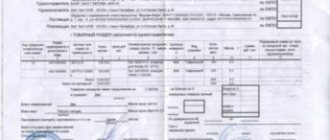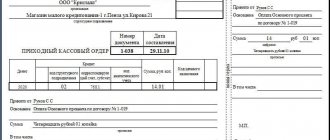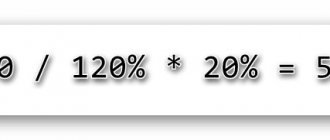The invoice form has a regulated structure, which was approved by government decree No. 1137 dated December 26, 2011 (as amended on August 19, 2017). The form is necessary to organize accounting for both parties to the transaction - buyers and sellers. It confirms several operations at once:
- shipment of the consignment;
- the fact of provision of the ordered services;
- the reality of the work.
With its help, not only the transfer of products to the customer is recorded, but also its valuation. When an invoice is filled out, the sample cannot be changed by the company itself. All adjustments to the form can be carried out only at the legislative level. If the template is incorrectly designed and the data reflected in it is inaccurate, the buyer may face the problem of non-recognition of the claimed VAT deduction.
Purpose of an invoice and cases of its use
[ads-pc-3] [ads-mob-3]
The obligation to draw up this document is enshrined in the Tax Code of the Russian Federation.
In accordance with its norms, VAT taxpayers must fill out an invoice within 5 days after the transaction. It confirms the buyer’s right to apply an incoming deduction for the corresponding tax, and the seller indicates the emergence of an obligation to the budget to pay a mandatory payment. The main requirement is that the document must be properly executed.
Invoices are of the following types:
- incoming (issued by suppliers)
- outgoing (compiled at the enterprise at the time of the transaction).
Based on them, purchase books and sales books are filled in, the results of which are subject to reflection in the VAT return.
An invoice must also be issued upon receipt of an advance (in whole or in part) under concluded contracts. The deadline for this is also set at 5 days. But there is an exception. If the goods are shipped within this period, then there is no need to issue a separate advance invoice. In this document, you can use generic names, but it is desirable that it begins with “Advance for …”. After issuing a regular invoice for shipment, the advance invoice is recorded by the seller in the purchase book.
There is also an adjustment invoice
, which is issued in the event of a change in the cost of goods supplied.
It is compiled when specifying the price or quantity of material assets. This document should contain indicators before and after the change, as well as deviation lines with an increase or decrease. It is allowed to issue a single document that collectively corrects several invoices. The invoice form is established by the Government of the Russian Federation. Changes and additions can be made to it, provided that all mandatory details are preserved. The invoice can be in paper or electronic form.
In the latter case, you need to enter into a written agreement about this and check the technical capabilities of transferring an electronic document. In addition, it must be signed with an enhanced electronic digital signature.
In the paper version, two copies are made for each of the parties.
What is an invoice
An invoice is a document confirming the issuance and acceptance of inventory items (material assets) from one business entity to another. Without this form, counterparties (individual entrepreneurs, legal entities) will not be able to complete the transaction. The buyer will not be able to deliver the products on arrival, and the seller will not be able to write them off from the warehouse.
Formation of documentation
The document must contain the following information:
- name of the business entity that generated the strict reporting form;
- date of;
- Full names, positions and signatures of employees involved in the transfer and acceptance of goods;
- list of products;
- measuring units;
- quantitative characteristics;
- unit cost of goods and materials;
- total price and other information.
In the practice of business document flow, a counterparty can issue the following types of invoices:
- paper;
- electronic.
In accordance with paragraph 1 of Art. 6 Federal Law of the Russian Federation No. 63 of 04/06/2011, documents on electronic and paper media are equivalent if there are signatures of the responsible persons. Electronic signatures are used for invoices in electronic form.
Documentation on paper is issued in 2 copies. One of them is transferred to the buyer, the other is stored in the accounting department. The document is certified by the signatures of both parties to the transaction. If an error is found, it can be corrected. Adjustments must be additionally certified by the signatures of the seller and buyer.
The online invoice is generated in one copy and consists of 2 files. The seller enters information in 1 of them, the buyer fills out the 2nd. Each file is certified by electronic signatures of counterparties.
Note! Transaction participants do not have the opportunity to make adjustments to online forms. If errors have been identified, then an act on the discovery of the inaccuracy should be drawn up and agreed upon with other counterparties.
In addition to businessmen, some government agencies are interested in the availability of invoices. Fiscal authorities control the correctness of the document. If inaccuracies are detected, penalties are applied to the business entity.
The presence of waybills is checked by traffic police officers in the case of cargo transportation. Throughout the entire route, inspectors have the right to check the vehicle, the goods being transported and the correctness of the documentation for them. The parameters of the transported cargo must fully comply with the information contained in the document. The rules for transporting goods do not change depending on the type of vehicle. Invoices will have to be issued for any type of transportation.
In what cases is it not necessary to issue an invoice?
Many organizations use preferential tax regimes, for example, UTII or simplified tax system. Art. 169 of the Tax Code of the Russian Federation allows them not to issue invoices when selling (supplying) goods, performing work, or providing services. There are situations when partners located on OSNO ask to draw up an invoice with VAT included.
In this case, the organization has the obligation to pay it to the budget and submit a declaration. An invoice under the simplified tax system can be issued on a voluntary basis without allocating VAT, and in the column instead of the rate, “Without VAT” is written. An invoice without VAT is also issued by organizations that have received an exemption from VAT in accordance with the law.
From October 1, 2014, enterprises that pay VAT may, on the basis of concluded written agreements with counterparties, not draw up these documents if their buyer uses UTII, simplified tax system, etc. But at the same time, in all other forms (invoices, certificates of work performed, checks and receipts for PKO and others), it is still necessary to allocate the amount of VAT.
Here, companies using the simplified tax system may have problems with the “income minus expenses” regime, since they must separately include in expenses the cost of material assets and VAT on them. The basis for including this VAT in costs is the invoice. Its absence may lead to their exclusion when calculating the tax base. The way out of this situation is to use other documents as confirmation, for example, a bill of lading with VAT allocated or a payment order.
An invoice does not need to be issued if goods and materials are sold abroad and there is no taxable object (for example, a contribution to the authorized capital). It is also not drawn up for cash payments to individuals if they are given a cash receipt or BSO for goods sold in retail, public catering, or services provided directly to the population.
Responsible for compilation
The practice of business document management has determined the following circle of persons responsible for drawing up the document:
- storekeepers;
- sellers;
- managers;
- carriers;
- cashiers;
- accounting;
- businessmen.
At the legislative level, a unified form of invoices has not been developed. Business entities can independently create a template for use. You can also find a suitable document form on the Internet. It is recommended to use forms that meet the requirements of an economic entity and modern business.
It is recommended that invoices be drawn up and signed at the time of the transaction. But counterparties can agree on other deadlines for signing the documentation. They can be issued before the transaction or after it retroactively. This process is not regulated by law, so the parties will not be held accountable. But in order to avoid unnecessary difficulties if you have to seek legal protection, it is recommended to generate and sign invoices in a timely manner.
Invoice sample filling
[ads-pc-3] [ads-mob-3]
This document is filled out on the basis of instructions approved by Resolution No. 1137 of December 26, 2011.
When preparing an invoice, its serial number and date of issue are indicated. Organizations that have structural divisions through “/” must indicate their numbers established in the order on accounting policies.
The numbering must be the same for both shipment and advance invoices. The “Correction” line is filled in if a corrective document is being prepared and must contain information about the original invoice. Otherwise, a dash is added.
Next, fill in the name (full or abbreviated) of the seller in accordance with the registration data, his address, INN and KPP.
In the line “Consignor and his address” the name and address of the consignor are entered. If it matches the seller, then you need to make the entry “He is the same” here. In invoices issued for work performed and services rendered, a dash must be placed in this line.
By analogy, the column “Consignee and his address” is filled in.
Next, you need to fill in information about payment documents if an advance payment was made. The number and date of the payment order, cash receipt order, etc. are indicated here. If the advance was made in non-cash form, a dash is entered in this column.
In the next section, you must write down the name of the buyer (full or abbreviated), his postal address, TIN and KPP.
Legislation allows you to prepare an invoice in a currency other than Russian. Therefore, in the appropriate line you must indicate the type of currency and its OKV code.
The tabular part of the document records the name of the goods, works, services, their unit of measurement indicating the OKEI code, quantity with unit price, total cost, amount of excise taxes, VAT rate and amount, as well as the total amount including taxes.
The last columns are filled in if goods and materials sold in the Russian Federation were produced abroad. The name and code of the country according to OKSM, as well as details of the customs declaration are indicated here.
The invoice is filled out in value terms, rounded to 2 decimal places.
The document is signed by the director and chief accountant of the enterprise. It can be endorsed by officials vested with such powers, and information about the reasons for this must be present (number and date of the power of attorney or order).
If an invoice is issued by an individual entrepreneur, then either he or his authorized representative must sign it. Here you also need to fill in the information about the state registration certificate.
Documents drawn up in electronic form must be signed only with the enhanced signature of the head of the company.
An example of filling out an invoice is discussed below.
Filling out online
You can find many services on the Internet that allow you to make and print online forms. Most web resources offer this service free of charge. After registration, the user will be able to create and save documents. In the future, using the saved invoices, new primary documentation is filled out automatically. To do this, you will need to select one of the previously saved forms. The functionality of the system allows you to calculate the price of a unit of production and the final cost; the remaining lines of the electronic document are filled out automatically.
Nuances of processing some invoices
When making a delivery to a branch of a legal entity, the name of this structural unit is written in the line “Consignee”, and the name of the parent organization is written in “Buyer”
Advance invoices should only use the estimated tax rate and should not include quantities.
By virtue of the concluded agreement, a legal entity can act as a tax agent for VAT. These are agreements for the lease of state and municipal property, as well as the acquisition of goods and materials on the territory of the Russian Federation from foreign partners who are not registered. In this case, the document is issued on behalf of the seller by the buyer, who also signs it.
Dashes are placed in the lines “Consignee” and “Consignor”; the payment details indicate the data of documents with past payment. Tax agents draw up declarations on their own behalf and pay the calculated VAT.
If non-excise goods are sold or work is performed, the provision is indicated “without excise tax”.
Purpose
The formation of accounting documentation is explained by the need to move inventory items from one point to another. Based on this document, the accountant enters information into the reporting and writes off goods from the warehouse.
Additional Information! An invoice will be required if the product must be returned to the seller.
There may be several reasons for a return:
- low quality characteristics of the product;
- detection of defects or breakdown of inventory items during the warranty period;
- incomplete set;
- errors during assembly.
To return inventory items, you will also need to generate at least 2 forms. It is recommended to create an additional document if it becomes necessary to go to court.
To move inventory items within the company, an invoice is also required. This will allow you to control the transfer of inventory items from one responsible person to another.
why is a cube more convenient?
Convenient online invoicing
Instantly send invoices by e-mail to your buyer
Debt control for each customer
Management reporting
Organized storage of all your documents
20% discount on accounting services from your accountant
Stop wasting time filling out templates and forms
The KUB service helps you issue invoices in 20 seconds and prepare other documents without a single error, due to the complete automation of filling out templates.
KUB is a new standard for issuing and sending invoices to customers.
Start using CUBE right now
14 days
FREE ACCESS
Need billing help or advice?
Get expert billing help from accountants
+7
[email protected] kub-24
Features of filling TORG-12
Business entities that use online accounting in their activities can use the resource not only to fill out TORG-12 using the online method and save documents, but also to send them to counterparties. At the same time, no additional fees are charged to users for this.
To fill out the TORG-12 invoice using the online method, it is enough to follow the following recommendations:
- To generate the form, you must fill in the lines with the details of the parties to the transaction. This operation can be performed manually or automatically using the TIN. If the transfer of goods is carried out using the services of the sender of the goods and its recipient, then their details will be required.
- Number the forms.
- If there are several types of products, you will need to add lines.
- After saving the form, you can print it and send it by email.
The online method of generating invoices will not cause any difficulties for users. The functionality of most online accounting programs and web services is easy to use, allowing even a beginner to cope with the task.







